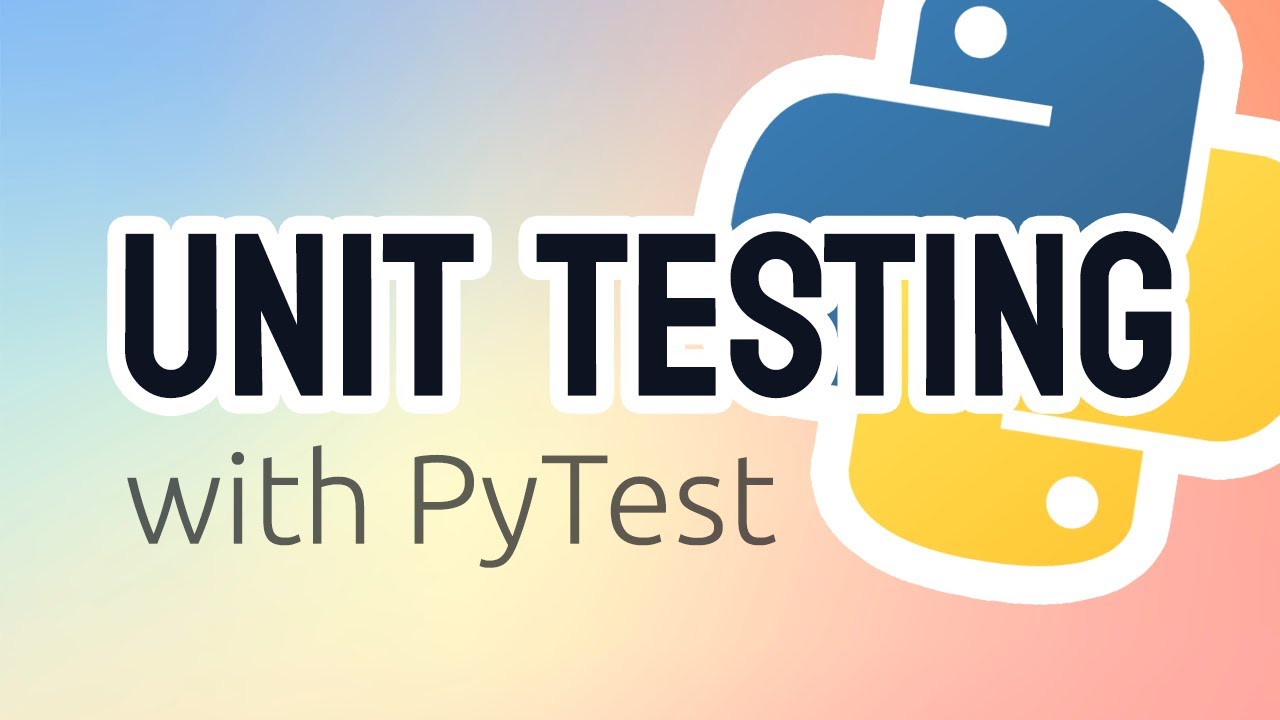How to Perform Unit Testing with pytest

Unit testing is a critical part of the software development lifecycle, ensuring that individual components of a program work as expected. pytest is a powerful testing framework for Python that simplifies the process of writing and running tests. It provides a range of features to support various testing needs, including test discovery, fixtures, and parameterization.
This comprehensive guide will cover everything you need to know about using pytest for unit testing, from installation and basic usage to advanced features and best practices.
Table of Contents
- Introduction to
pytest - Setting Up Your Environment
- Writing Basic Tests
- Using Fixtures
- Parameterizing Tests
- Handling Expected Failures
- Testing Exceptions
- Mocking and Patching
- Advanced Features
- Test Organization and Management
- Best Practices
- Conclusion
1. Introduction to pytest
What is pytest?
pytest is a popular testing framework for Python that allows you to write simple as well as scalable test cases. It is known for its simplicity, scalability, and powerful features. pytest supports fixtures, parameterized testing, and a variety of plugins to extend its functionality.
Key Features of pytest
- Simple Syntax: Easy to write and understand test cases.
- Powerful Fixtures: Reusable components that provide setup and teardown functionality.
- Parameterization: Easily run the same test with different input data.
- Rich Plugins: Extend
pytestwith a variety of plugins for additional functionalities. - Detailed Reporting: Provides detailed and readable test reports.
2. Setting Up Your Environment
Installing pytest
To use pytest, you need to install it via pip:
pip install pytest
Verifying Installation
To verify that pytest is installed correctly, you can check its version:
pytest --version
You should see the version number of pytest if it is installed properly.
3. Writing Basic Tests
Creating a Test File
pytest looks for files matching the pattern test_*.py or *_test.py. Create a file named test_sample.py:
# test_sample.py
def test_addition():
assert 1 + 1 == 2def test_subtraction():
assert 2 - 1 == 1
Running Tests
To run the tests, execute the following command:
pytest
pytest will discover and run all tests in the current directory and its subdirectories.
Understanding Assertions
Assertions are used to check if a condition is true. If the condition is false, pytest will report a failure.
def test_multiplication():
assert 2 * 3 == 6
Using assert Statements
pytest uses assert statements to verify that the output of your code matches the expected results.
def test_division():
result = 10 / 2
assert result == 5
4. Using Fixtures
Introduction to Fixtures
Fixtures provide a way to set up and tear down resources needed for tests. They are useful for tasks such as creating test data or initializing components.
Defining a Fixture
Create a fixture using the @pytest.fixture decorator:
import pytest
def sample_data():
return [1, 2, 3, 4, 5]
Using Fixtures in Tests
Pass the fixture function as an argument to your test functions:
def test_sum(sample_data):
assert sum(sample_data) == 15
Fixture Scope
Fixtures can have different scopes, such as function, class, module, or session. Set the scope using the scope parameter:
def database_connection():
# Setup code
yield connection
# Teardown code
Autouse Fixtures
Fixtures can be automatically used in tests without explicitly passing them:
def setup_environment():
# Setup code
yield
# Teardown code
5. Parameterizing Tests
Introduction to Parameterization
Parameterization allows you to run the same test function with different input values, reducing code duplication.
Using @pytest.mark.parametrize
Use the @pytest.mark.parametrize decorator to parameterize tests:
import pytest
def test_multiplication(input, expected):
assert input * 2 == expected
Parameterizing Multiple Arguments
You can also parameterize tests with multiple arguments:
def test_addition(a, b, result):
assert a + b == result
6. Handling Expected Failures
Using @pytest.mark.xfail
Use the @pytest.mark.xfail decorator to mark tests that are expected to fail:
import pytest
def test_division_by_zero():
result = 1 / 0
Conditional Expected Failures
You can also conditionally mark tests as expected failures:
import pytest
import sys
def test_python_version():
assert sys.version_info >= (3, 7)
7. Testing Exceptions
Using pytest.raises
Use pytest.raises to test that a specific exception is raised:
import pytestdef divide(a, b):
return a / b
def test_divide_by_zero():
with pytest.raises(ZeroDivisionError):
divide(1, 0)
Checking Exception Messages
You can also check the exception message:
def test_divide_by_zero_message():
with pytest.raises(ZeroDivisionError, match="division by zero"):
divide(1, 0)
8. Mocking and Patching
Introduction to Mocking
Mocking allows you to replace parts of your code with mock objects during testing. This is useful for isolating the code under test and simulating external dependencies.
Using unittest.mock
pytest integrates with the unittest.mock module for mocking:
from unittest.mock import patchdef get_data():
return fetch_data_from_api()
def test_get_data():
with patch('module_name.fetch_data_from_api') as mock_fetch:
mock_fetch.return_value = {'key': 'value'}
result = get_data()
assert result == {'key': 'value'}
Mocking with Fixtures
You can also use fixtures to provide mock objects:
def mock_fetch_data():
with patch('module_name.fetch_data_from_api') as mock:
yield mockdef test_get_data(mock_fetch_data):
mock_fetch_data.return_value = {'key': 'value'}
result = get_data()
assert result == {'key': 'value'}
9. Advanced Features
Custom Markers
Create custom markers to categorize and filter tests:
import pytest
def test_long_running():
# Test code
Filter tests by marker:
pytest -m slow
Test Discovery
pytest automatically discovers and runs tests by looking for files and functions that match naming conventions. You can customize test discovery by configuring pytest.ini.
Code Coverage
Measure code coverage with the pytest-cov plugin:
pip install pytest-cov
Run tests with coverage:
pytest --cov=your_module
Running Tests in Parallel
Speed up test execution by running tests in parallel with the pytest-xdist plugin:
pip install pytest-xdist
Run tests in parallel:
pytest -n auto
Test Reporting
Generate test reports in various formats, such as HTML and JUnit XML:
pytest --html=report.html
pytest --junitxml=report.xml
10. Test Organization and Management
Organizing Test Files
Organize tests into directories and modules for better structure:
tests/
__init__.py
test_module1.py
test_module2.py
Using Fixtures Across Modules
Share fixtures across multiple test modules by placing them in a conftest.py file:
# tests/conftest.py
import pytest
def sample_data():
return [1, 2, 3]
Test Dependencies
Manage dependencies between tests using fixtures:
def test_dependency(sample_data):
assert len(sample_data) == 3
11. Best Practices
Write Clear and Concise Tests
Ensure your tests are easy to understand and maintain by following these guidelines:
- Descriptive Test Names: Use descriptive names for test functions and variables.
- Single Responsibility: Each test should focus on a single aspect of the functionality.
Keep Tests Isolated
Ensure that tests do not depend on each other by isolating their execution:
- Use Fixtures: Use fixtures to set up and tear down resources.
- Avoid Global State: Avoid using global variables or states that could affect other tests.
Use Parameterization Wisely
Use parameterization to cover a range of inputs without duplicating code. However, avoid excessive parameterization that could make tests hard to understand.
Regularly Review and Refactor Tests
Regularly review and refactor your test code to maintain its quality and effectiveness. Remove redundant tests and update outdated ones.
Automate Test Execution
Integrate pytest with Continuous Integration (CI) systems to automate test execution and ensure that tests are run on every code change.
12. Conclusion
pytest is a powerful and flexible testing framework that simplifies the process of writing and running tests. By leveraging its features, such as fixtures, parameterization, and advanced plugins, you can effectively manage and execute your tests. Adhering to best practices will ensure that your tests are reliable, maintainable, and provide valuable feedback throughout the development process.
With this comprehensive guide, you should have a solid understanding of how to use pytest for unit testing. Whether you are starting with basic tests or exploring advanced features, pytest provides the tools you need to create robust and effective test suites.







